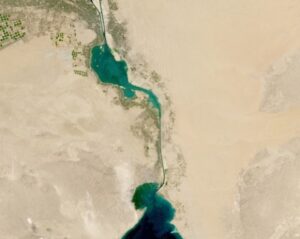
IBM’s New Geospatial AI Model on Hugging Face Harnesses NASA Data for Climate Science

(Frame Stock Footage/Shutterstock)
IBM recently announced its watsonx.ai geospatial foundation model for Earth observation is now available on Hugging Face, the popular open source machine learning platform and community.
The HLS Geospatial Foundation Model was trained using NASA’s Harmonized Landsat Sentinel-2 (HLS) dataset, which combines Earth observation data from Landsat, the jointly managed project from NASA and the U.S. Geological Survey, with the EU’s Sentinel-2 satellites. The combined sensor measurements enable global land observations every two to three days at 30-meter spatial resolution, according to NASA.
IBM unveiled the HLS Geospatial FM in May. The foundation model converts NASA’s satellite observations into customized maps of natural disasters and other environmental changes. IBM claims it can analyze geospatial data up to four times faster than state-of-the-art deep-learning models, with half as much labeled data.
The model was trained on HLS data for one year across the continental U.S. and was fine-tuned on labeled data for flood and burn scar mapping. IBM says that with additional fine tuning, the base model can be utilized for use cases such as tracking deforestation, predicting crop yields, and monitoring greenhouse gases.
IBM touts its other potential applications as helping to estimate climate-related risks to crops, buildings, and other infrastructure, valuing and monitoring forests for carbon-offset programs, and developing predictive models to help enterprises create strategies to mitigate and adapt to climate change.
The foundation model is the result of IBM’s Space Act Agreement with NASA, an initiative specifically designed to build an AI foundation model for geospatial data. IBM says this will be the largest geospatial foundation model on Hugging Face and will democratize access and application of AI to generate new innovations in climate and Earth science.

Foundation models were applied to HLS imagery, such as this true color composite image of irrigated agricultural fields near Sadat City, about 80 km northwest of Cairo, Egypt. (Source: NASA)
In addition to the open source model on Hugging Face, a commercial version of the model, part of IBM’s AI and data platform watsonx, will be available through the IBM Environmental Intelligence Suite later this year, IBM says.
Sriram Raghavan, VP of IBM Research AI said in a statement that open source technologies play an essential role in accelerating critical areas of discovery such as climate change.
“By combining IBM’s foundation model efforts aimed at creating flexible, reusable AI systems with NASA’s repository of Earth-satellite data and making it available on the leading open-source AI platform, Hugging Face, we can leverage the power of collaboration to implement faster and more impactful solutions that will improve our planet,” Raghavan said.
“AI remains a science-driven field, and science can only progress through information sharing and collaboration,” said Jeff Boudier, head of product and growth at Hugging Face in a release. “This is why open-source AI and the open release of models and datasets are so fundamental to the continued progress of AI, and making sure the technology will benefit as many people as possible.”
“We believe that foundation models have the potential to change the way observational data is analyzed and help us to better understand our planet,” said NASA’s Chief Science Data Officer, Kevin Murphy. “And by open sourcing such models and making them available to the world, we hope to multiply their impact.”
Related Items:
Terrabyte: Germany’s New High Performance Data Analytics Platform for Earth Observation
First Open Map Dataset Launched by AWS, Meta, Microsoft-founded Overture Maps Foundation
Researchers Use Deep Learning to Plow Through NASA Snow Radar Data































